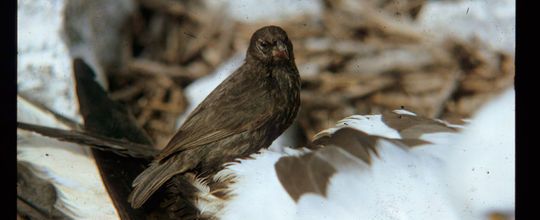Classification
There are 15 species of finches on the Galapagos Islands. Each one
is classified by the
Adaptation of their beaks.
Domain: Eukarya
Kingdom: Animalia
Phylum: Chordata
Class: Aves
Order: Passeriformas
Family: Thraupidea
Genus: Geospiza
Species: G. difficilis septentrionalis
Kingdom:
Animalia
The Kingdom Animalia is classified by eukaryotic multicellular
organisms. Most can move independently and all are heterotrophs.
Most embryos pass through the blastula stage, which is exclusive to
animals.
Phylum: ChordataAll chordates have a notochord, pharyngeal slits, which are like
gills, a dorsal nerve chord, connecting the brain to other muscles,
and a post-anal tail, at some point in their life, even if it is
only in their embryonic state.
Class: Aves
The Aves include birds, which have the unique characteristic of
flight. To be able to fly birds have a one-way breathing system,
light hollow bones, strong muscles for flying and feathers.
Order: Passeriformas
The Paseriformas, or perching birds, are the most diverse order of
birds. The male and females differ in appearance. During breeding
season they live in pairs and can become territorial and aggressive.
 Genus: Geospiza
Genus: Geospiza
All species in the Geospiza genus live on the
Galapagos Islands. They are most commonly known as "Darwins
Finches".
Family: Thraupidea
Thraupidea, or tanangers members are non migratory. Most have short
rounded wings and their beaks are determined by what they eat.
Species: G. difficilis septentrionalis
The species difficilis refers to the sharp-beaked ground
finches. These finches Fernandina, Santiago, Pinta, Genovesa, Darwin
and Wolf Island, whereas the vampire finch, septentrionalis
can only be found on Darwin and Wolf Island. The vampire finch
is known because it will drink the blood of the seabirds
This phylogenetic tree represents the relationship of birds with
other organisms.
Continue to
Habitat
Home
